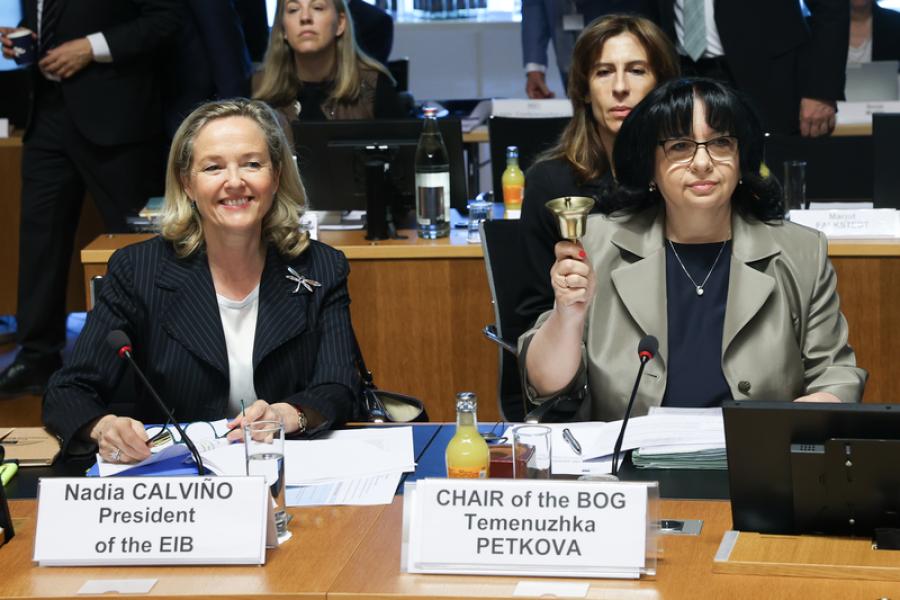– The insurers must take into account many more potential risks – such as the risk related to the use of vessels, heavy cranes or e.g. the risk associated with varying wave heights. Due to the above-described reasons, the insurance market has created insurance terms and conditions dedicated and specific to offshore wind construction and operation projects – explains in an interview with BalticWind.EU Michal Olszewski, Energy Power and Mining Director and insurance/reinsurance broker in GrECo Polska.
Patrycja Rapacka: Offshore Wind Insurance: what does it really mean? At what stage of the wind farm’s development should insurance be included?
Michal Olszewski: Offshore wind project insurance is a key component contributing to the project’s success, in addition to the financial and legal areas. It is particularly prominent during the site preparation process, and the successive operation of offshore wind projects. There are no known cases of projects that have not been covered by appropriate insurance policies.
Due to their uniqueness and high degree of complexity, every offshore wind project requires an adequate type of insurance cover. Standard insurance terms and conditions dedicated to e.g. onshore wind farm constructions will not adequately cover an offshore project. Transport, the installation process, applied technologies, including the foundations for wind turbines or electric cabling are much more complex due to the marine environment in which they operate. The insurers must take into account many more potential risks – such as the risk related to the use of vessels, heavy cranes or e.g. the risk associated with varying wave heights. Due to the above described reasons, the insurance market has created insurance terms and conditions dedicated and specific to offshore wind construction and operation projects.
On average, it takes about 2 to 3 years from the final financial decision to the commissioning of the farm, preceded by 5 to 7 years of project preparation and obtaining the necessary permits. Collaboration with insurers, in turn, starts more or less 6 to 12 months prior to the financial closure of the project.
What is the biggest risk from the investors’ point of view? How can the developer protect against such a risk?
The scope of attainable insurance cover depends on the phase of a given project and the customer’s expectations. The construction and erection all risk insurance along with the advance loss of profit (construction phase), and all risk and business interruption (operation phase) are most important and most common insurance policies.
Where are the biggest risks in offshore wind development?
Offshore wind construction projects are exposed to various risks. Cable damage (whether inter-array or export) losses are the most frequently occurring events that result in losses. About 40% of loss quantities and 83% of loss value is related to cables. Another type of frequent loss is events related to foundations. Mechanical damage of principal machinery and the plant (engineering/executive problems), and losses caused by lightning or fires are further causes of damage.
Note that the main costs related to the repair of damage to an offshore wind farm are related to vessels. In the worst case scenario, these costs can exceed GBP 20 million per month; often, due to the weather, repair work must be suspended, and the vessel rental costs are not reduced.
What do you think about insurance in the context of offshore wind development in the Baltic Sea? Will the insurance terms differ depending on the region?
According to the assumptions of the Energy Policy of Poland (PEP 2040), offshore wind is set to be one of the pillars of the Polish power system. If we look at the whole Baltic Sea region, according to the estimates presented by the European Commission, the potential capacity of the Baltic Sea is estimated at approximately 93 GW in 2050 (at present 2.2 GW). If the plans are realised, the investments will be enormous, which also involves insurance needs. The insurance market will have to catch up with customers’ needs and provide the appropriate solutions that are required. In addition, in light of projects executed in countries without offshore wind projects yet, it is vital that local insurers are involved. As the GrECo Group is willing to support local insurance markets, we have initiated a project called “Offshore Academy”, where people who know the specificity of offshore wind insurance share their knowledge and competence with local insurers. So far, this project is being carried out in Poland, but it will soon be extended further into countries around the Baltic Sea.
Taking into account the specificity of offshore wind power insurance, we do not assume any differences in the method of placement, or the insurance scope depending on the region of the project execution.
What does the offshore wind insurance market look like now?
The global market in offshore wind insurance is rather small – now about 30-40 insurers support their customers in such projects. In recent years, the offshore wind insurance market has become very competitive. In the years 2010-2018, insurance premiums declined by approximately 60-70%. At the same time, the premiums assigned were insufficient to cover the losses of the insurers. Losses, in particular those occurring during new wind farm construction processes, remain at a high level. Due to this situation, from 2019 the price of insurance cover offered has rapidly increased, and the terms and conditions of the cover have also become much more stringent. Now we are experiencing the so-called “hard phase of the market”.
Thank you














